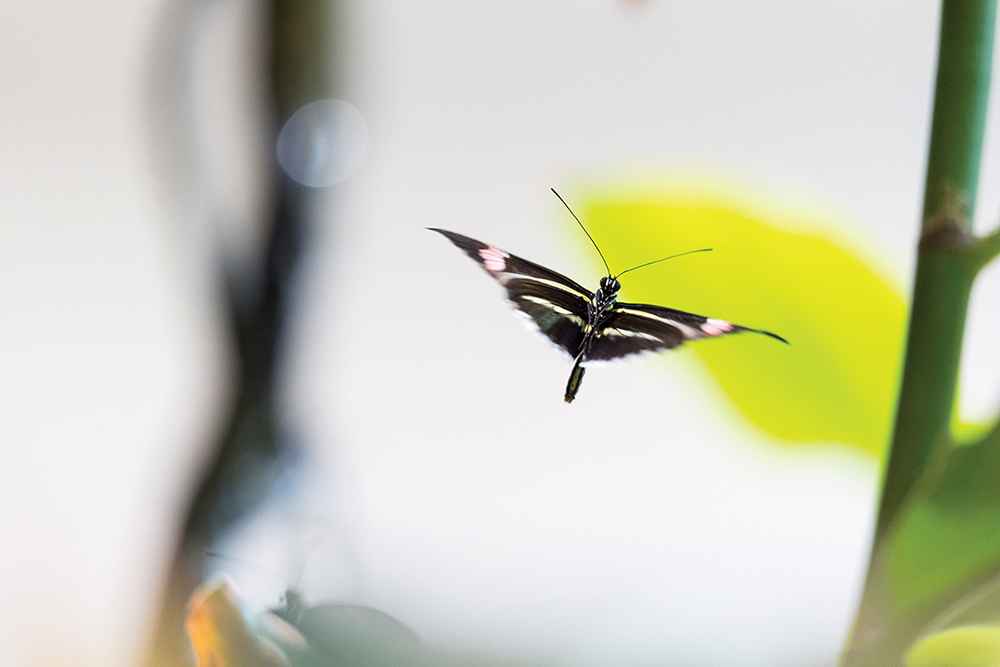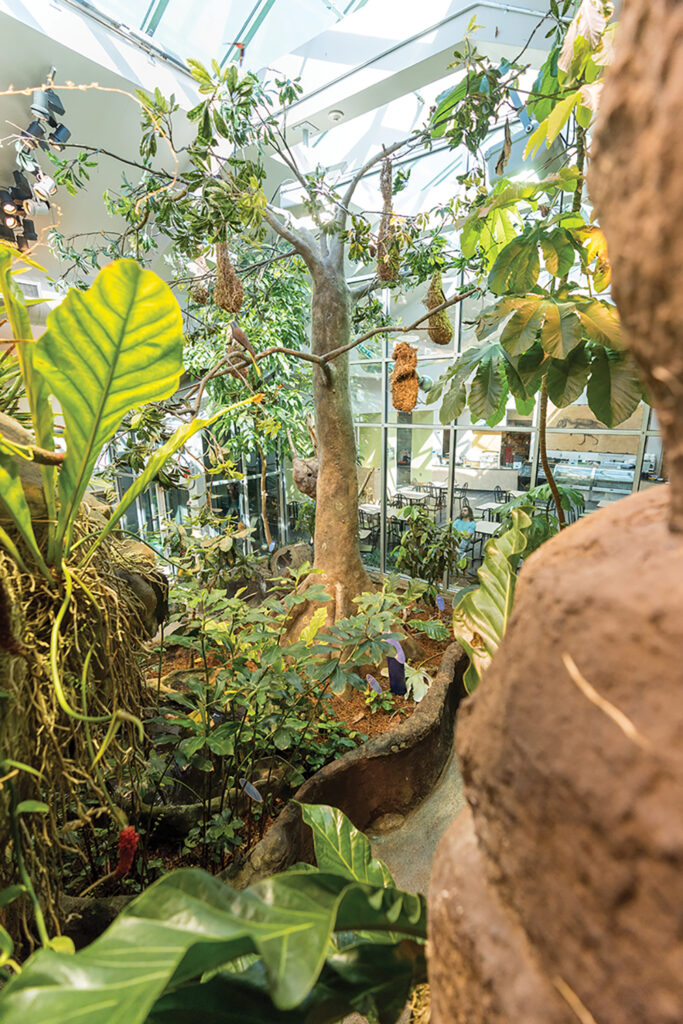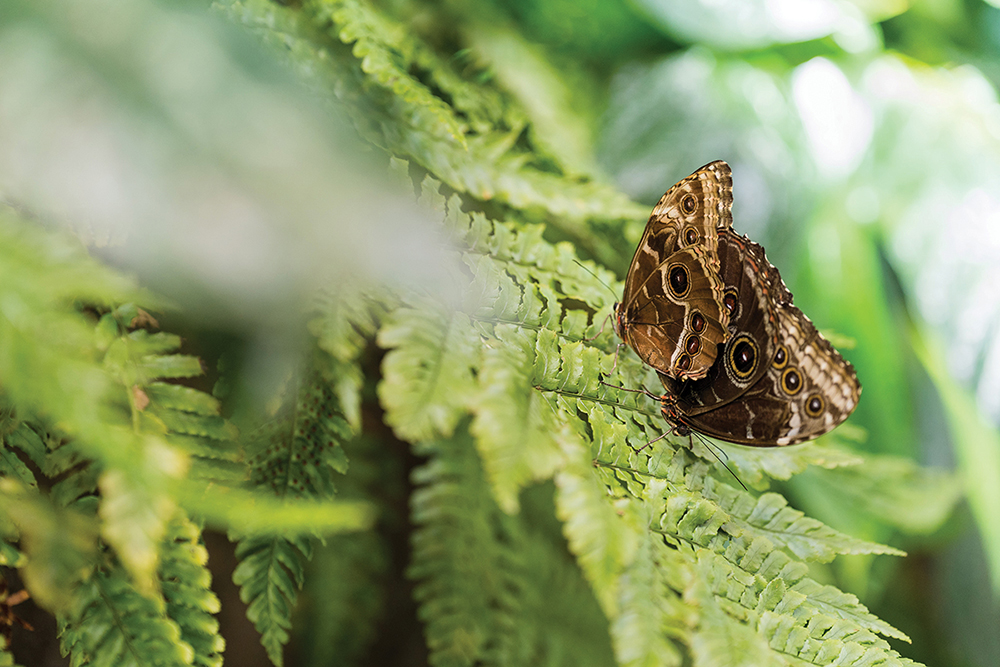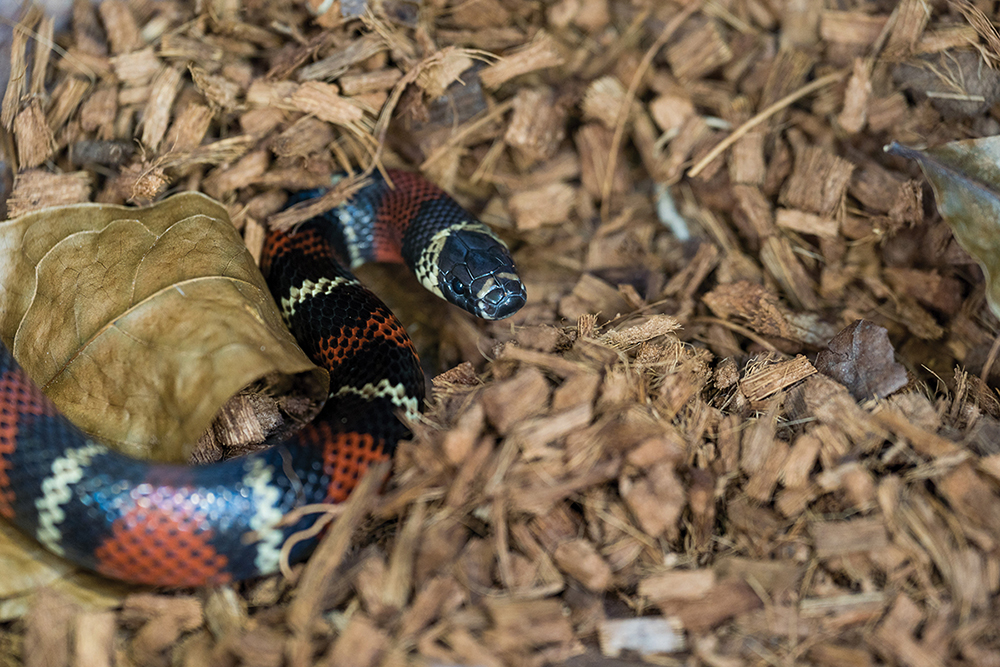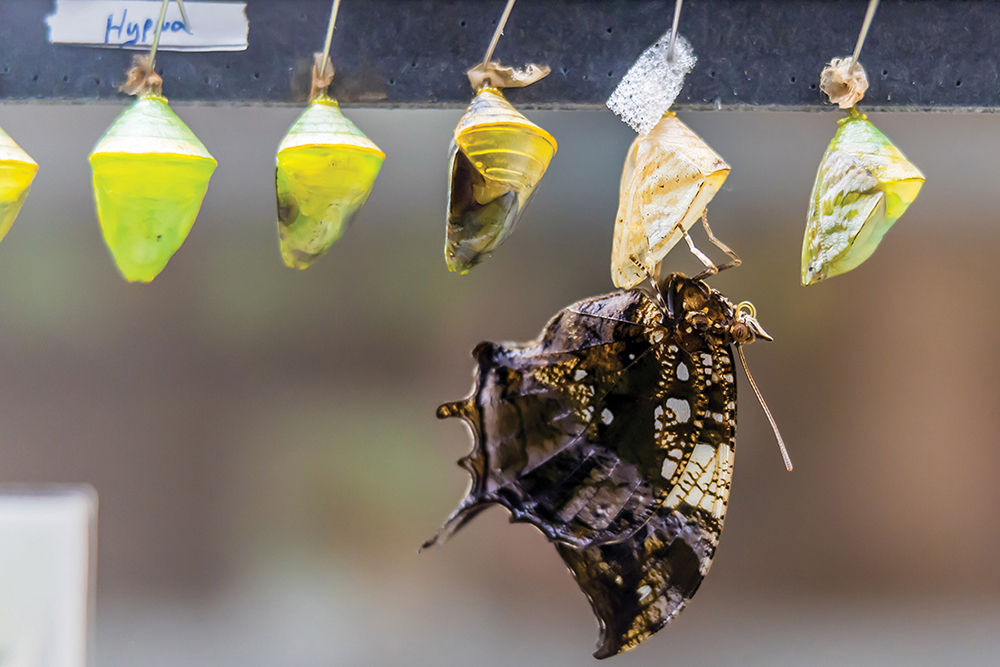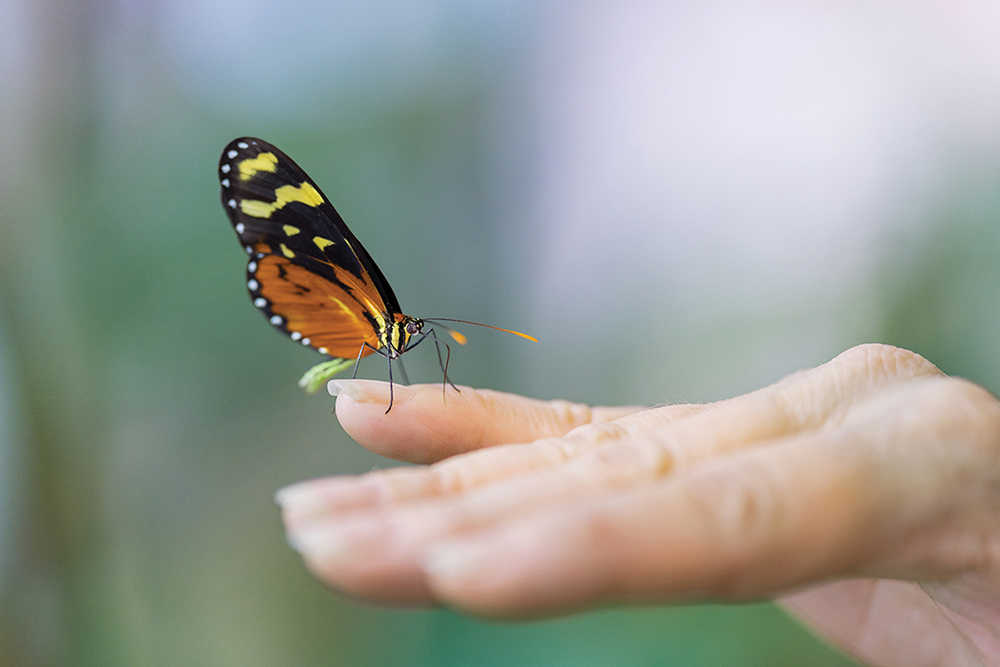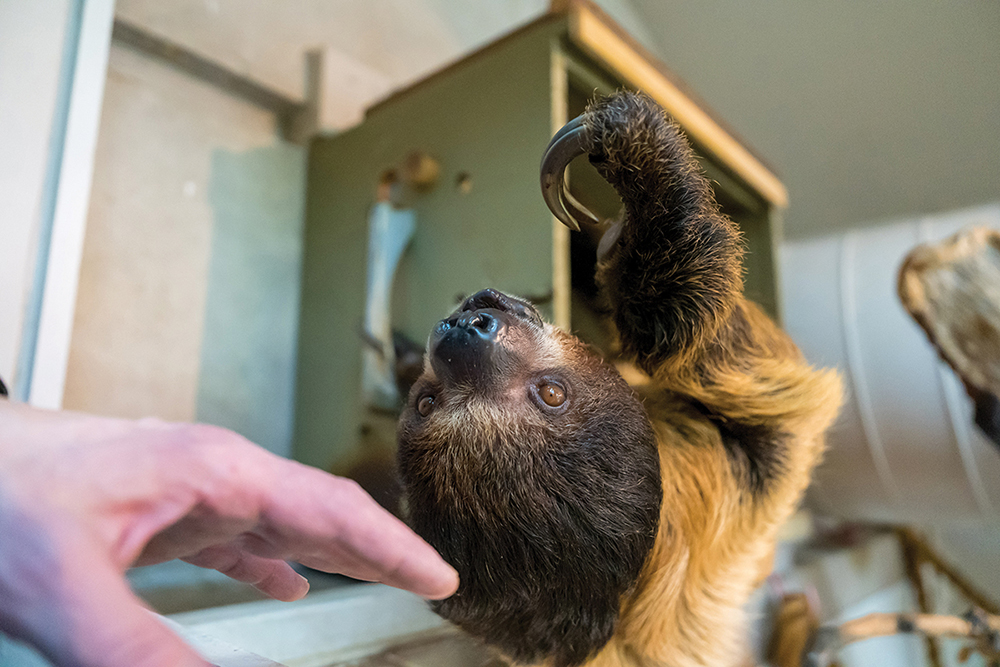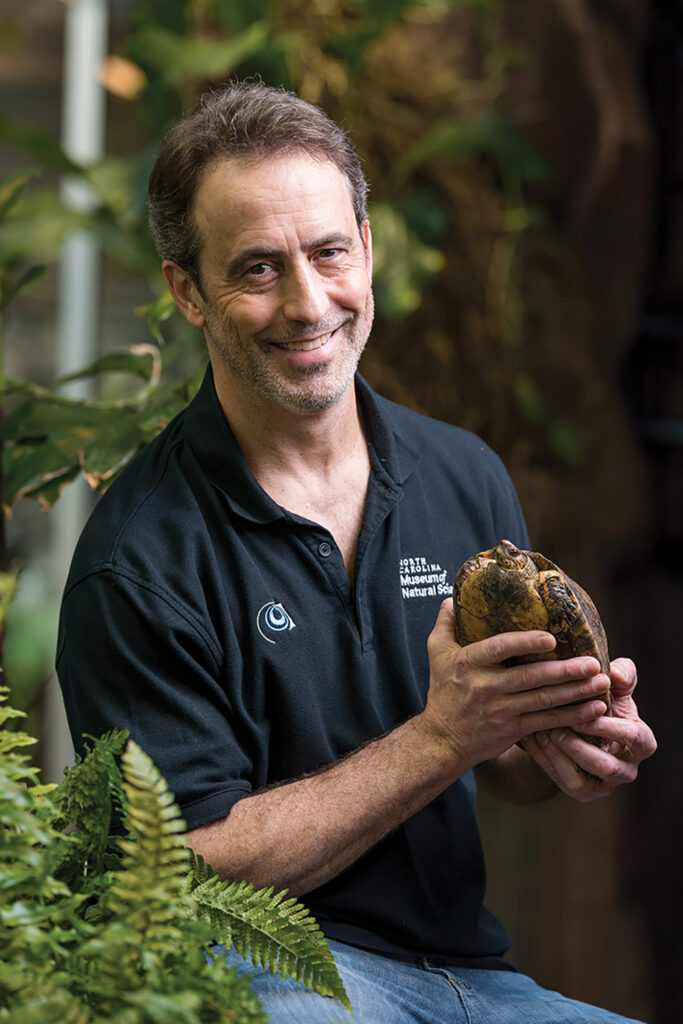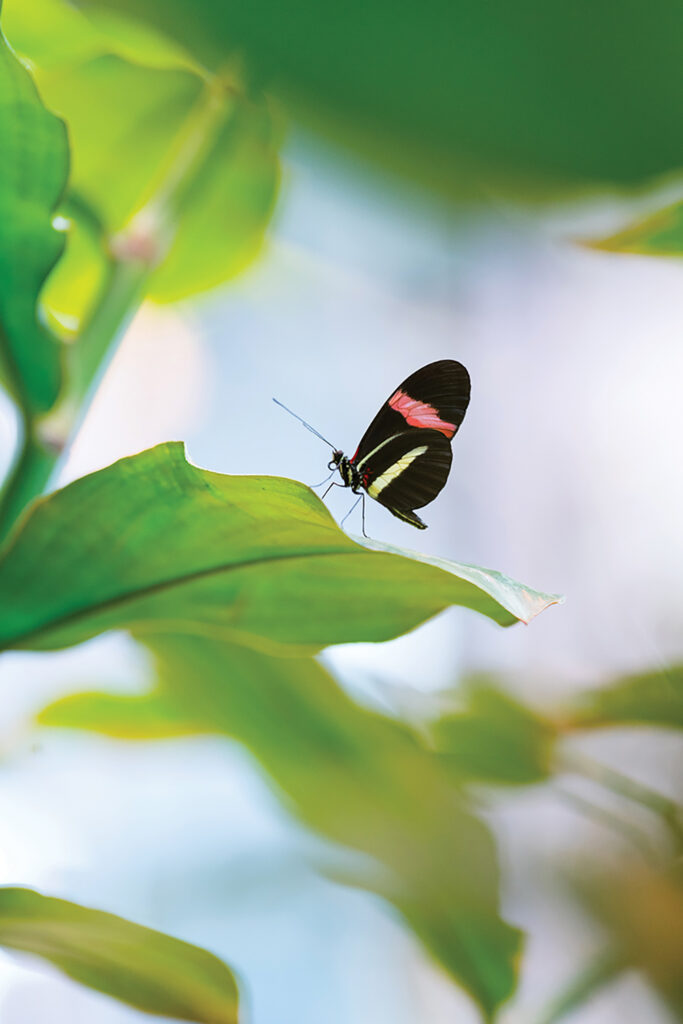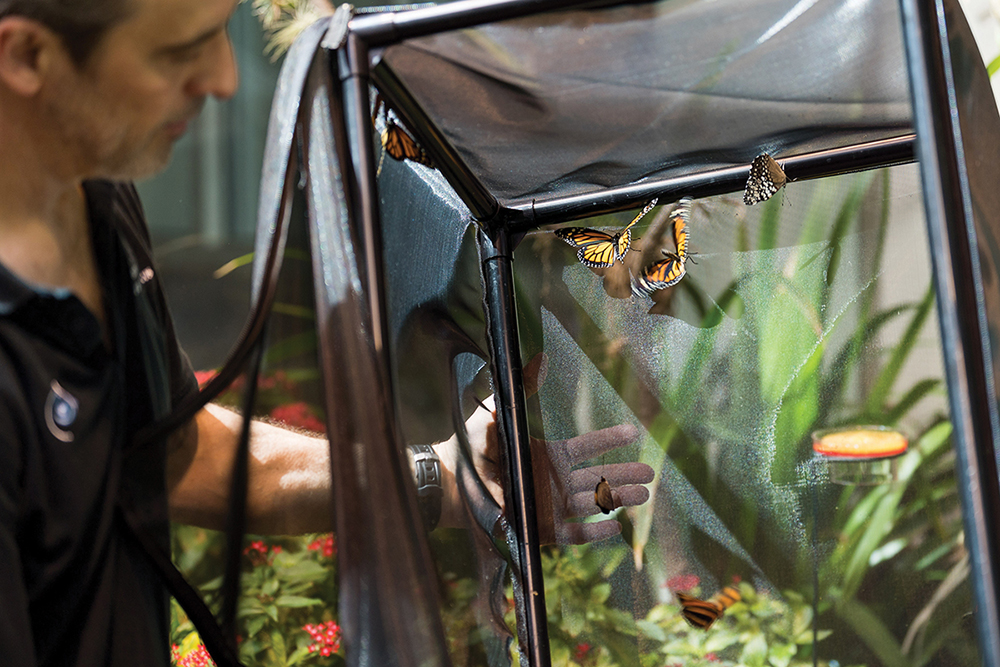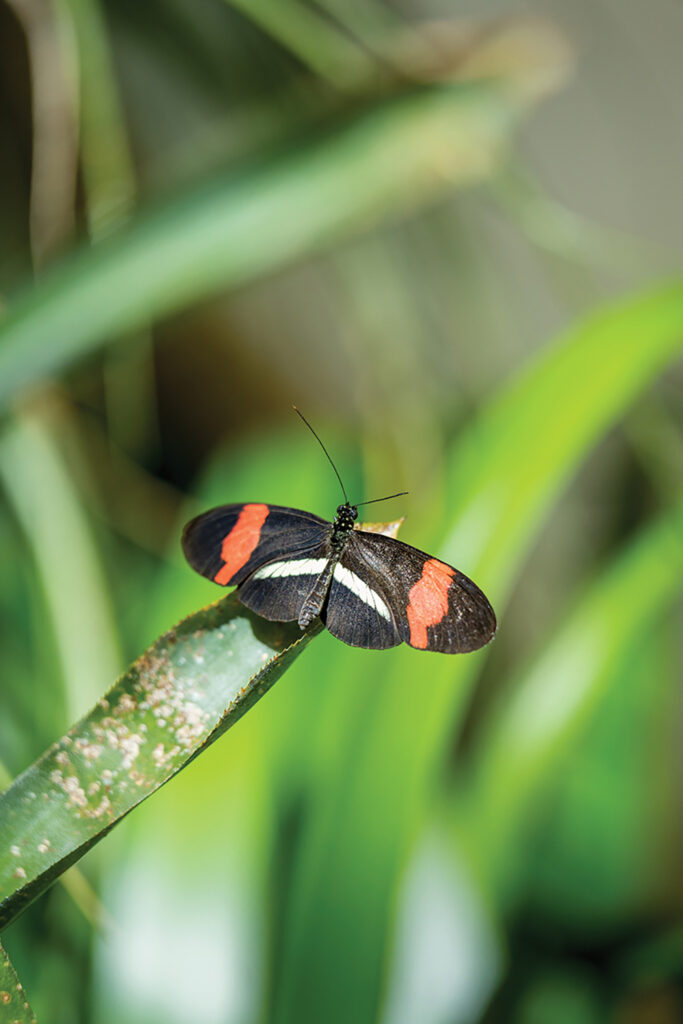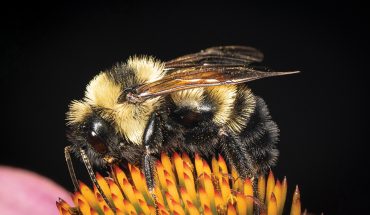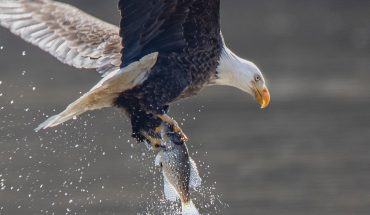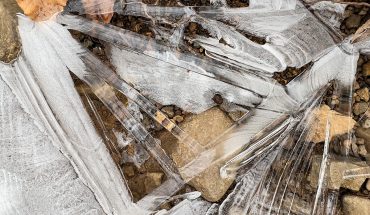This summer the Butterfly Room will go back to normal hours. Learn about the butterflies, turtles, snakes and sloth that live here.
by Hampton Williams Hofer | photography by Justin Kase Conder
The Living Conservatory on the fourth floor of the North Carolina Museum of Natural Sciences is a visitor favorite, an exhibit that immerses guests in a Central American tropical dry forest filled with animal and plant life. Inside the glass conservatory, visitors can encounter animals and plants like nowhere else in the museum.
But the popular exhibit — the museum estimates that 100,000 visitors came through per year at its peak — has been mostly closed since the onset of the pandemic, due to safety protocols and staffing issues.
This May, however, it will reopen for regular visiting hours, and all of the butterflies, turtles, tarantulas, snakes and even the two-toed sloth will be there.
“A lot of our guests have visited before or have heard about the butterflies and come looking for them specifically,” says the museum’s acting director of living collections, Jeff Mette. “I think the free-flying aspect is a big appeal.”
The Living Conservatory is, in a sense, a giant butterfly house. Visitors can lean down to watch as a striking black-and-orange hecale longwing butterfly sucks nectar from the star-shaped blooms of a bright pink penta plant.
They can see the delicate movements of chocolate page butterflies and red postman longwings. Species native to Central and South America live in this conservatory in the heart of downtown Raleigh, exemplifying North Carolina’s connection to the tropics through migration and shared species.
Since most butterflies live only a short time — only a few weeks in this environment — stocking the Living Conservatory is a constant task for Andy Kauffman, who started as an intern at the NCMNS 21 years ago and is now its curator. The butterfly pupae, produced at a breeding facility in Costa Rica, are carefully packaged and shipped to Denver, then on to North Carolina.
It is an expedient two-to three-day trip, with vigilance at each step to prevent the introduction of agricultural pests (hence the double-lock doors of the conservatory that prevent the butterflies from getting out into the world).

Kauffman designed special metal rails that hold replaceable foam strips to which the butterfly pupae are pinned, and guests can watch the butterflies emerge through a plexiglass frame.
“To move the newly emerged butterflies, I gently transfer them to a small mesh cage by carefully capturing each one with a cupped hand, or by gently grasping their thorax between my thumb and forefinger.
It depends on the size of the butterfly,” says Kauffman. After the butterflies are transferred from the emergence chamber to the mesh cage, he records the number of butterflies collected and releases them into the conservatory.
Not every pupa makes it out of its chrysalis. But, says Kauffman, that’s not reason for sadness: Each one has already had a whole life as a caterpillar, feeding and growing as it builds up to the reproductive stage, that fleeting and spectacular stint as a butterfly.
“I hope that people leave the conservatory inspired to get outside and explore, but also with a greater appreciation for the natural world,” he says.
Many come for the butterflies, but for Mette, the draw of the Living Conservatory is harder to spot: He favors the fish — Central American cichlids and Eastern mosquitofish — circling the 200-gallon pond in the exhibit. The cichlids, native to brackish water, fast-moving rivers and bays, are often selectively bred for aquariums due to their brilliant streaks of neon markings.
Another streak of neon is in the conservatory too, this one nestled under leaves and bark: a Stuart’s milk snake. (Don’t worry — the snake is enclosed in its own terrarium.) Guests may spot ornate wood turtles making their way into the pond or nibbling on bowls of turtle salad.
There is a fuzzy “Brazilian Black” tarantula (Grammostola pulchra) securely locked at eye level inside a plexiglass faux-rock enclosure.
Not limited to animals, the life in the conservatory also features a cashew tree, vanilla orchid and pineapple plant, all exemplary of the Central and South American tropical climate the conservatory replicates.
Kauffman never tires of seeing guests’ expressions when they first step inside his exhibit, when a butterfly lands on their shoulder, or they look up to see the sloth moving overhead. “I think the biggest draw is the fact that it is an immersion exhibit,” he says, “where one can walk amid free-flighted butterflies in a tropical setting.”
The two-toed sloth, who slowly traverses ropes and noshes on sweet potatoes high in the corner, is the unexpected star of the show. He would live among these plants and animals up in the canopies of a tropical rainforest, and comfortably lives among them here.
He is golden-haired and slovenly, spending much of his days resting in his hide box at the top of the exhibit. Both nocturnal and shy, the sloth emerges most often in the evenings to retrieve vegetables from his food dish, which he often takes back up to his box to eat in private.
He has been carefully trained — hand-fed and petted by Kauffman — to help him remain comfortable with humans, for when he requires care from one of the museum’s in-house veterinarians.
“I hope that everyone who visits the Living Conservatory has a memorable experience and learns something new about the plants, animals and habitats there,” Mette says, “but more than new answers, I would like them to leave with new questions — about what they want to learn next.”
This article originally appeared in the May 2023 issue of WALTER magazine.

